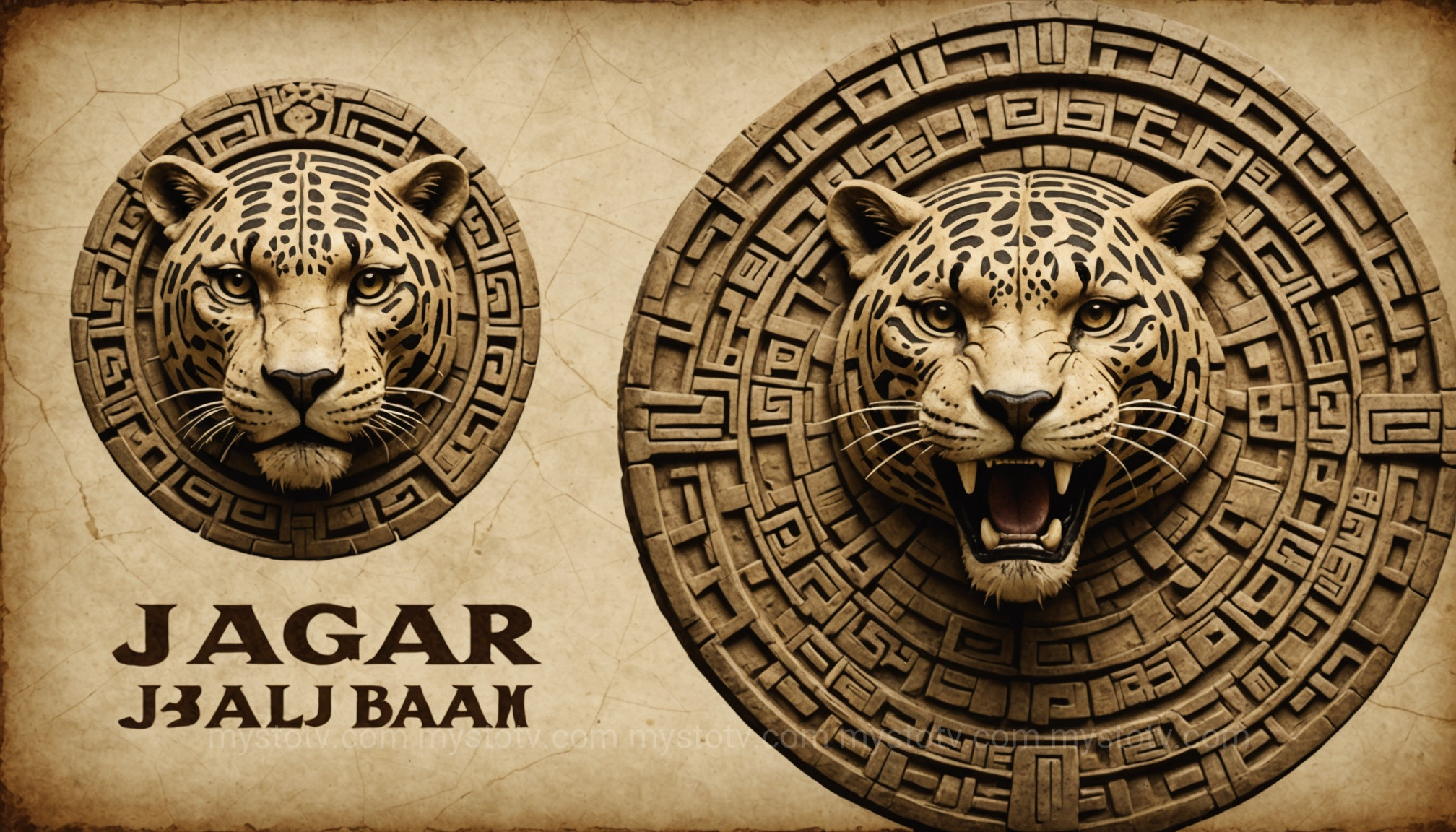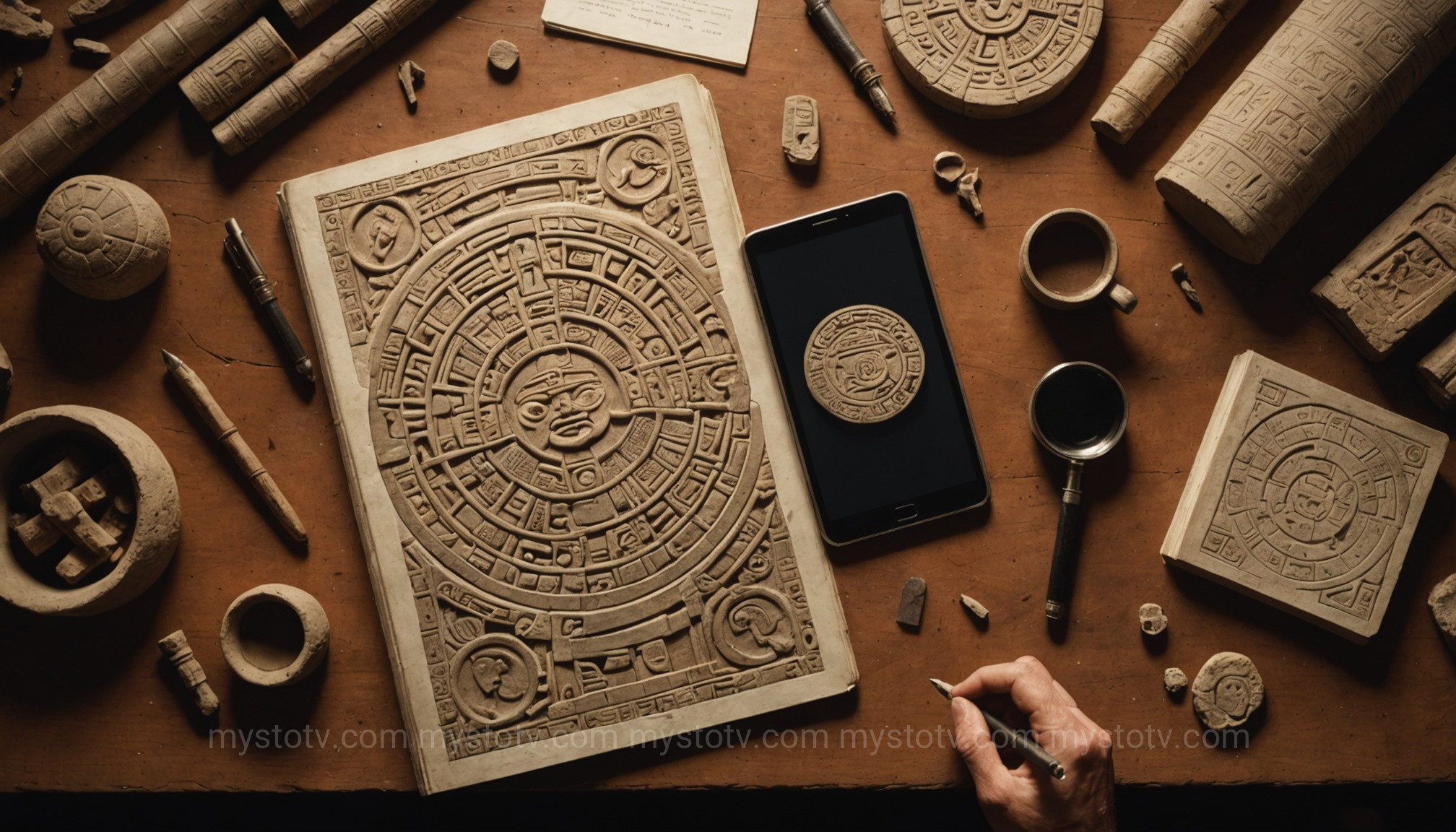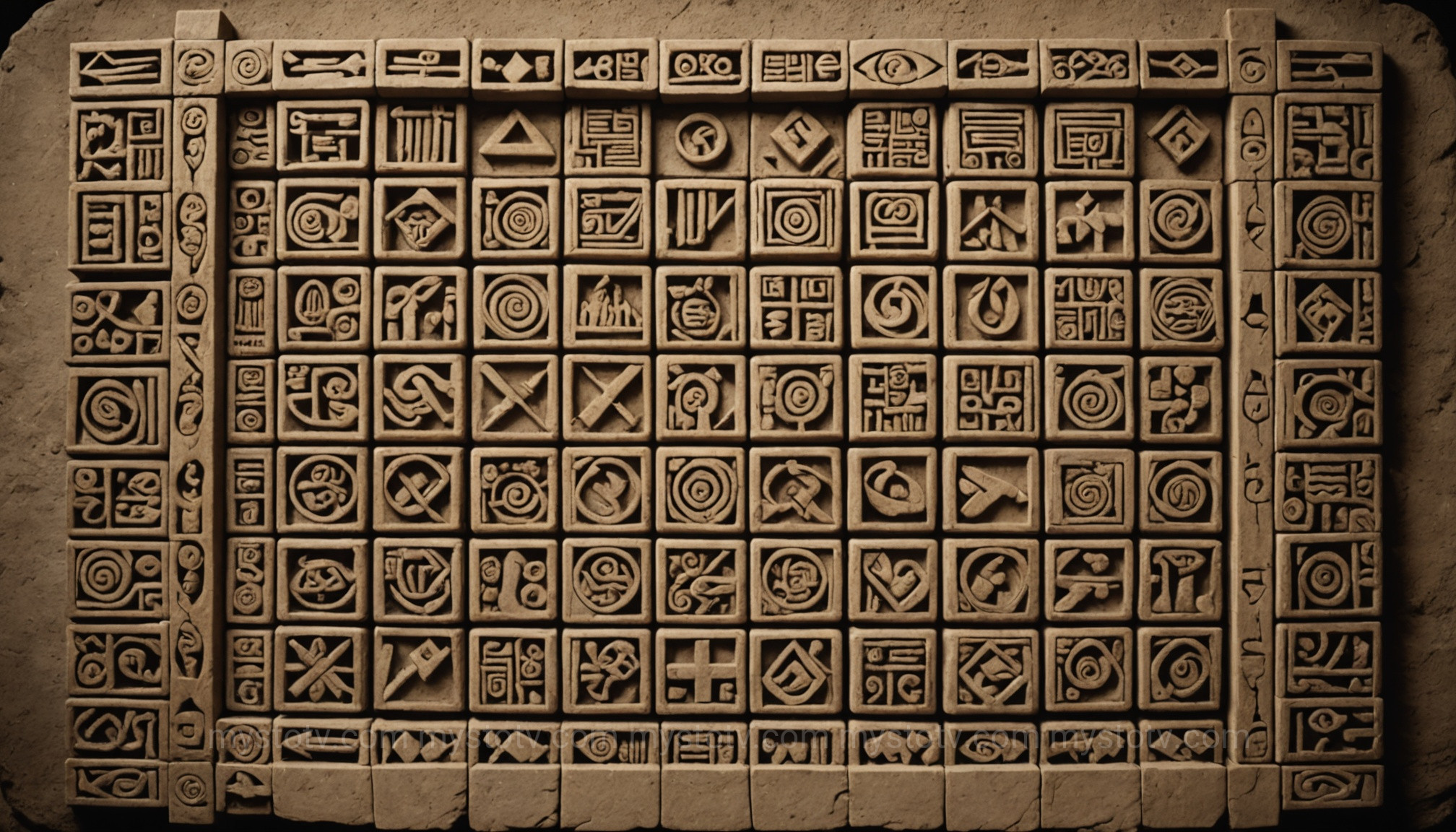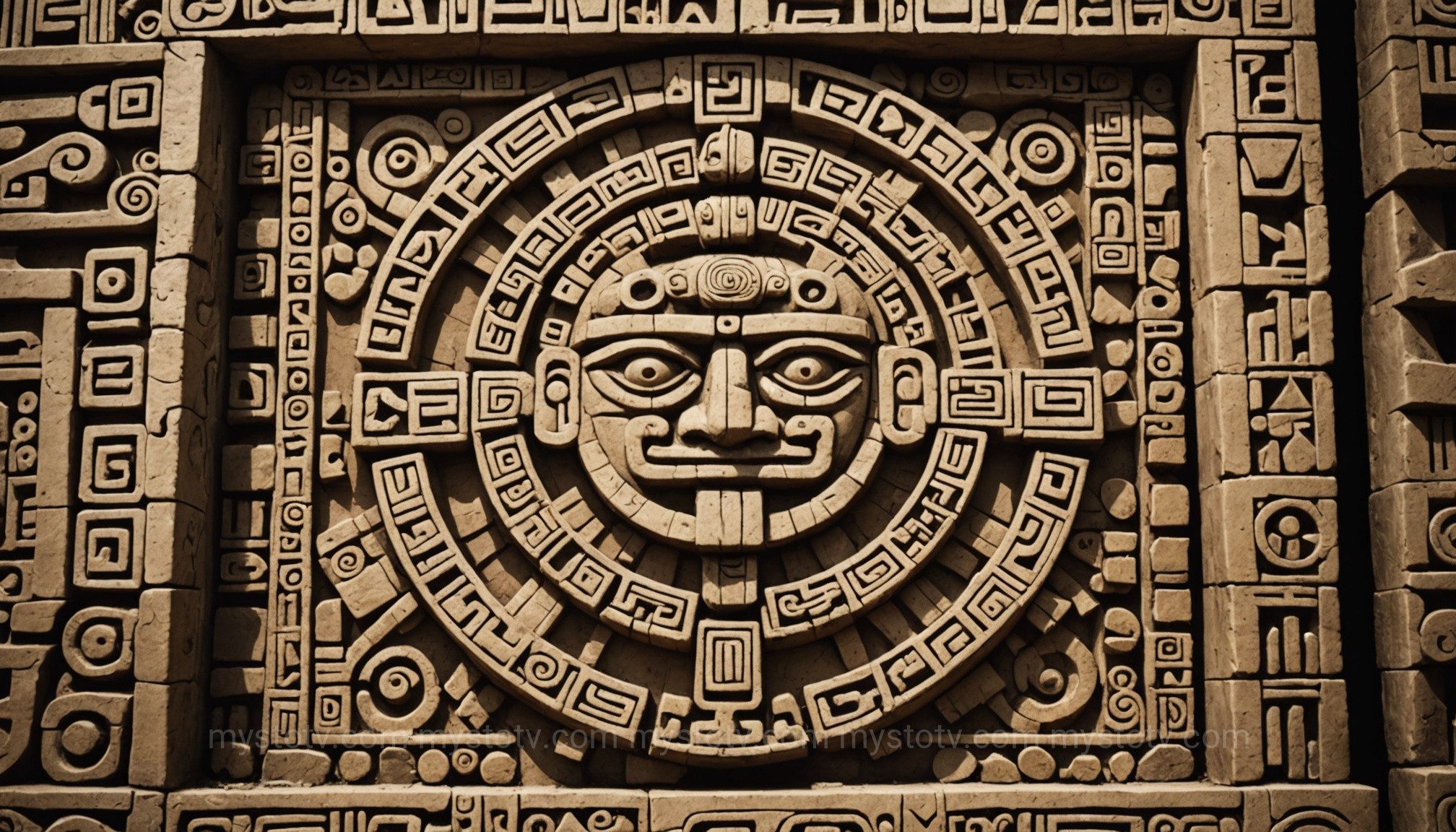I still remember the feeling. Standing at the base of a towering stela in Palenque, the air thick with humidity and the calls of howler monkeys, I traced the lines of the carved stone with my eyes. The intricate, almost otherworldly symbols stared back, a silent language from a lost world. They weren't just decorations; they were stories, histories, and beliefs. At that moment, I felt an overwhelming urge not just to admire them, but to understand them. That experience sparked my journey into the world of mayan hieroglyphs for beginners, a path that felt intimidating at first but proved to be one of the most rewarding intellectual adventures I've ever undertaken. This guide is born from that journey, designed to demystify the process and show you that decoding these ancient secrets is within your reach.
Contents
- 1 Understanding the Maya Script: A Crucial First Look for Mayan Hieroglyphs for Beginners
- 2 The Essential Toolkit for Learning Mayan Hieroglyphs for Beginners
- 3 Your First Steps in Deciphering: A Practical Guide to Mayan Hieroglyphs for Beginners
- 4 Common Pitfalls and Key Resources for Mayan Hieroglyphs for Beginners
- 5 Frequently Asked Questions about Mayan Hieroglyphs
- 6 Conclusion: Your Journey into the Mayan World
- 7 References
Understanding the Maya Script: A Crucial First Look for Mayan Hieroglyphs for Beginners
Before you can read a single glyph, you must first unlearn a fundamental assumption most of us have about writing: that it's based on an alphabet. The Mayan script is not an alphabet where one symbol equals one sound. Instead, it is a logosyllabic system, a beautiful and complex hybrid of two types of signs. This is arguably the most critical concept for anyone starting their journey with Mayan hieroglyphs for beginners.
Logograms: The Word-Signs

Logograms, or word-signs, are glyphs that represent an entire word or idea. Think of them like modern symbols such as '$' for 'dollar' or '&' for 'and'. The Maya had hundreds of these. For example, a stylized jaguar head directly meant b'alam, the Mayan word for jaguar. A glyph depicting a shield represented the word pakal, meaning 'shield'. Learning to recognize the most common logograms is a foundational step. They often represent nouns like animals, places, titles, or objects that were central to Mayan life.
Analysis: The initial challenge for a beginner is realizing that a single, complex-looking glyph might just be one word. Unlike an alphabet where you sound out letters, here you must often learn the symbol and its corresponding word as a single unit. Recognizing that the Maya communicated concepts with pictures is the first mental shift required to break into the system. It’s a move from phonetic decoding to semantic recognition, and it’s why visual memorization plays a larger role than it does in learning alphabetic scripts.
Syllabograms: The Sound-Signs
This is where the system’s genius truly shines. To supplement the logograms, the Maya developed a full set of syllabograms, or syllabic signs, which represent phonetic sounds, specifically consonant-vowel (CV) combinations. For instance, there are distinct glyphs for sounds like ba, ke, le, ma, po, and so on. These syllabograms could be used to spell out words phonetically, especially words that were difficult to draw, like abstract concepts, grammatical elements, or proper names.
Crucially, the Maya would often combine logograms and syllabograms within a single glyph block. They might write the word for 'jaguar' (b'alam) using the jaguar head logogram. Or, they could spell it out phonetically using three syllabograms: ba-la-ma. According to the rules of Mayan phonology, the final vowel in a sequence like this is typically silent, so ba-la-ma is read as b'alam. They also used syllabograms as phonetic complements, attaching a syllabic sign to a logogram to clarify its pronunciation. For example, they might attach the syllabogram for ma to the b'alam logogram as a clue that the word ends with an 'm' sound.
Analysis: Grasping this dual system is the key that unlocks the entire script. It explains why Mayan writing looks so varied and complex. Some glyphs are pictures, some are sounds, and many are clever combinations of both. For the beginner, this means you can't rely on a single strategy. Sometimes you'll be a detective looking for pictorial clues (logograms), and other times you'll be a linguist sounding out syllables. This hybrid nature is what made decipherment so difficult for early explorers and what makes it so fascinating to learn today.
The Essential Toolkit for Learning Mayan Hieroglyphs for Beginners

With a basic understanding of the script's nature, the next step is to acquire the practical tools and rules of engagement. Think of this as learning the grammar and syntax of the visual language. Mastering these core principles is essential for anyone serious about Mayan hieroglyphs for beginners and will prevent a great deal of frustration down the line.
Mayan texts are typically arranged in a grid of glyph blocks. Within this grid, the reading order is not left-to-right like English. Instead, it follows a paired-column, zig-zag pattern. You start at the top left, read the first glyph block, then the one immediately to its right. After that, you move down to the next row and read the leftmost block, then its right-hand partner. You continue this pattern—left, right, down a row, left, right—until you reach the bottom of the column pair. Then you move to the next pair of columns and start again from the top.

Within a single glyph block, which can contain multiple individual signs, the arrangement also follows a general rule: read from top to bottom and left to right. A larger main sign often occupies the center, with smaller signs (affixes) attached to the top, bottom, left, or right.
Analysis: This structured reading order is a blessing for beginners. While the glyphs themselves are complex, the path through the text is predictable. Knowing this rule transforms a chaotic-looking wall of symbols into an orderly narrative. It’s the first step in imposing order on the visual information and allows you to isolate individual glyph blocks for closer examination. Learning to identify these individual blocks is your next objective.
Essential Resources: Your Companions on the Journey
You cannot learn this script in a vacuum. The epigraphers who dedicated their lives to the decipherment have left a treasure trove of resources. For any beginner, a few are indispensable:
- A Good Introductory Book: Michael D. Coe's Breaking the Maya Code is not a textbook but a thrilling history of the decipherment that provides essential context. For a practical guide, his book with Mark Van Stone, Reading the Maya Glyphs, is an unparalleled starting point.
- A Syllabary Chart: This is a grid of the known syllabograms (the ba, be, bi sounds). You will refer to this constantly. Dr. John Montgomery’s website and various academic resources offer reliable charts.
- Online Databases: Websites like the Foundation for the Advancement of Mesoamerican Studies, Inc. (FAMSI) offer access to drawings of stelae, pottery, and codices, which are invaluable for practice.
Analysis: Attempting to learn Mayan hieroglyphs without these resources is like trying to navigate a foreign country without a map or a dictionary. The pioneers of decipherment, like Yuri Knorozov, Linda Schele, and David Stuart, did the heavy lifting. By using their work, you are standing on the shoulders of giants. A good syllabary chart, in particular, changes the game from pure guesswork to a structured process of hypothesis and verification.
Your First Steps in Deciphering: A Practical Guide to Mayan Hieroglyphs for Beginners
Theory is one thing, but the real excitement begins when you apply it to an actual text. This section breaks down the process into manageable steps, guiding you through the interpretation of basic components. This hands-on approach is the most effective way to learn Mayan hieroglyphs for beginners.
Recognizing Numbers and Dates: The Long Count
The Maya were obsessed with time, and their inscriptions are often anchored by dates. Fortunately, their number system is remarkably simple and one of the easiest parts of the script to learn. It is a base-20 (vigesimal) system that uses just three symbols:
- A dot (•) for one.
- A horizontal bar (—) for five.
- A shell-like symbol for zero or completion.
Numbers from 1 to 19 were written by combining these. For example, the number 7 is two dots above a bar (2 + 5). The number 13 is three dots above two bars (3 + 10). This system was the backbone of the "Long Count" calendar, which tracked the number of days elapsed since a mythical start date in 3114 BCE. Long Count dates are often the very first glyphs you'll see on a monumental stela, introduced by a large "Initial Series Introducing Glyph."
Analysis: Learning the numbers gives you your first major "win." It allows you to immediately extract concrete information from a complex carving. When you can look at a stela and identify the date it was erected, the stone is no longer silent. You have found a tangible anchor point in history, and this provides the motivation to decode the narrative that follows.
Identifying Common Glyphs: Verbs, Nouns, and Titles
Once you have the date, the text typically moves into a standard formula: a verb followed by the name and titles of the subject. Learning to recognize a few of the most common glyphs in these categories can unlock the meaning of many basic sentences.
- The Birth Glyph: This glyph, often looking like the profile of an upturned frog head, signifies birth. Its appearance after a date tells you an important person was born on that day.
- The Accession Glyph: This glyph often involves a "toothache" motif (a figure clutching its jaw) combined with a headband, symbolizing the act of "taking office" or becoming king.
- The Ajaw Glyph: This is one of the most important glyphs, meaning "lord," "ruler," or "king." It appears constantly as a title following a ruler's name. Visually, it can be a stylized face or a syllabic spelling of a-ja-wa.
Analysis: These common glyphs act as signposts. By learning to spot them, you can quickly understand the *type* of event being described, even if you can't read the ruler's name yet. Is it a birth announcement? A coronation record? A war story? Recognizing these key verbs and titles provides a narrative framework, turning a jumble of glyphs into a story with a discernible subject and action.
Putting It Together: Reading a Simple Glyph Block

Let's try to read a simplified but common construction: the name of a ruler. A ruler's name glyph, known as a nominal phrase, is often followed by a series of titles. One of the most famous is that of the Palenque king K'inich Janaab' Pakal.
His name is often written with a logogram for 'shield' (pakal). To this, a scribe might add the syllabogram for la as a phonetic complement to guide the reader. Following the name, you would find a title, such as the ajaw glyph. A very common title is K'uhul Ajaw, or "Holy Lord." This would be represented by the glyph for K'uhul followed by the glyph for Ajaw.
So, a simplified section of text might read: [Pakal Logogram + la] [K'uhul Glyph] [Ajaw Glyph]. By applying your knowledge, you could decipher this as: "Pakal, the Holy Lord."
Analysis: This is the moment of synthesis where all the pieces come together. You combine your knowledge of reading order, logograms, syllabic complements, and common titles to extract meaning. Each successful decipherment, no matter how small, builds confidence. It demonstrates that the system, though alien, is logical and consistent. This process of piecing together the puzzle is the heart of epigraphy and the ultimate reward for the student of Mayan hieroglyphs.
Common Pitfalls and Key Resources for Mayan Hieroglyphs for Beginners
The path to reading Mayan script is not without its challenges. Understanding potential difficulties and knowing where to turn for help are just as important as learning the glyphs themselves. This section provides a realistic outlook for those studying Mayan hieroglyphs for beginners.
Allographs and Artistic Freedom
One of the first major hurdles is the concept of allographs: different signs that have the same sound or meaning. Just as we can write 'a' in many different fonts or handwritten styles, the Maya had multiple distinct glyphs for the same syllable. For example, there are several known signs for the syllable ba. Furthermore, Mayan scribes were artists who took great pride in their calligraphy. They often rendered glyphs in beautiful and elaborate ways, sometimes "full-figure" versions where the entire glyph is an animal or a person. This artistic license can make recognizing a glyph from a standard chart difficult.
Analysis: This is where rote memorization fails. You must develop a flexible sense of pattern recognition. Instead of memorizing one definitive version of a glyph, you learn to recognize its core diagnostic features. This shifts the learning process from simple memorization to a more sophisticated analytical skill. It’s also a reminder that this was a living, breathing script used by creative individuals, not a sterile, mechanical code.
Recommended Reading and Online Communities
To overcome these challenges, engaging with the work of experts and a community of fellow learners is vital.
- Books:
- Reading the Maya Glyphs by Michael D. Coe and Mark Van Stone. (The essential textbook)
- A Forest of Kings: The Untold Story of the Ancient Maya by Linda Schele and David Freidel. (Puts the writing in its historical context)
- The Art of the Maya Scribe by Michael D. Coe and Justin Kerr. (Focuses on the artistic and calligraphic aspects)
- Online:
- FAMSI (Foundation for the Advancement of Mesoamerican Studies, Inc.): Their website contains Kerr's database of Maya vase paintings and drawings of monuments—an incredible resource for practice texts.
- Maya Decipherment Blog: Run by leading epigraphers like David Stuart, this blog offers insights into the latest discoveries and ongoing debates.
Analysis: Self-study can only take you so far. These resources provide curated knowledge, context, and a wealth of practice material. Engaging with them ensures you are learning from accurate, peer-reviewed information rather than outdated or incorrect interpretations. The community aspect, even if just reading a blog, reminds you that decipherment is an active, evolving field, which makes the learning process dynamic and exciting.
Frequently Asked Questions about Mayan Hieroglyphs
As you delve deeper, specific questions naturally arise. Here are answers to a few common queries from those new to the field.
Is it possible to become fluent in reading Mayan hieroglyphs?
Fluency, in the sense of reading a text as easily as a modern newspaper, is likely impossible. The script is fragmentary, with many signs still debated or unknown. However, it is absolutely possible to become proficient. With dedicated study, one can learn to read the majority of monumental inscriptions and understand the general narrative of texts on pottery and in the codices. Proficiency means being able to identify dates, verbs, names, and titles and piece together the historical and mythological stories the Maya told about themselves.
Are all Mayan hieroglyphs deciphered?
No. While tremendous progress has been made since the 1980s, the decipherment is not 100% complete. Scholars estimate that around 85-90% of the syllabic signs are understood, allowing most texts to be read with a good degree of confidence. However, the meaning of some logograms remains elusive, and rare or unique glyphs still present puzzles for epigraphers. The work continues, and new readings are proposed and debated regularly in the academic community.
What is the difference between glyphs on stone monuments and those in the codices?
While the underlying writing system is the same, there are differences in style and content. Monumental inscriptions (on stelae and buildings) are typically carved in stone, resulting in a more formal, angular style. They primarily deal with the lives of rulers: births, accessions, wars, marriages, and ritual events. The four surviving codices (Dresden, Madrid, Paris, and Grolier) are painted on bark paper. Their style is more cursive and fluid. Their content is largely divinatory and astronomical, serving as almanacs for priests to schedule ceremonies and predict celestial events.
Conclusion: Your Journey into the Mayan World
Learning to read Mayan hieroglyphs is more than an academic exercise; it is an act of connection. It bridges the centuries, allowing the ancient Maya to speak directly to you in their own words. What begins as an intimidating collection of squiggles and faces transforms into a rich tapestry of history, poetry, and science. The journey requires patience and a willingness to embrace a different way of thinking about language, but the reward is unparalleled. By taking these first steps into the world of mayan hieroglyphs for beginners, you are not just decoding secrets; you are reviving a voice that was silenced for centuries. The stelae in Palenque are not silent, after all. You just need to learn their language.
References
- Coe, Michael D. Breaking the Maya Code. Thames & Hudson, 3rd ed., 2012.
- Coe, Michael D., and Mark Van Stone. Reading the Maya Glyphs. Thames & Hudson, 2nd ed., 2005.
- Foundation for the Advancement of Mesoamerican Studies, Inc. (FAMSI). http://www.famsi.org/
- Kerr, Justin. Maya Vase Database. http://research.mayavase.com/kerrmaya.html
- Schele, Linda, and David Freidel. A Forest of Kings: The Untold Story of the Ancient Maya. William Morrow, 1990.
- Stuart, David. Maya Decipherment Blog. https://mayadecipherment.com/